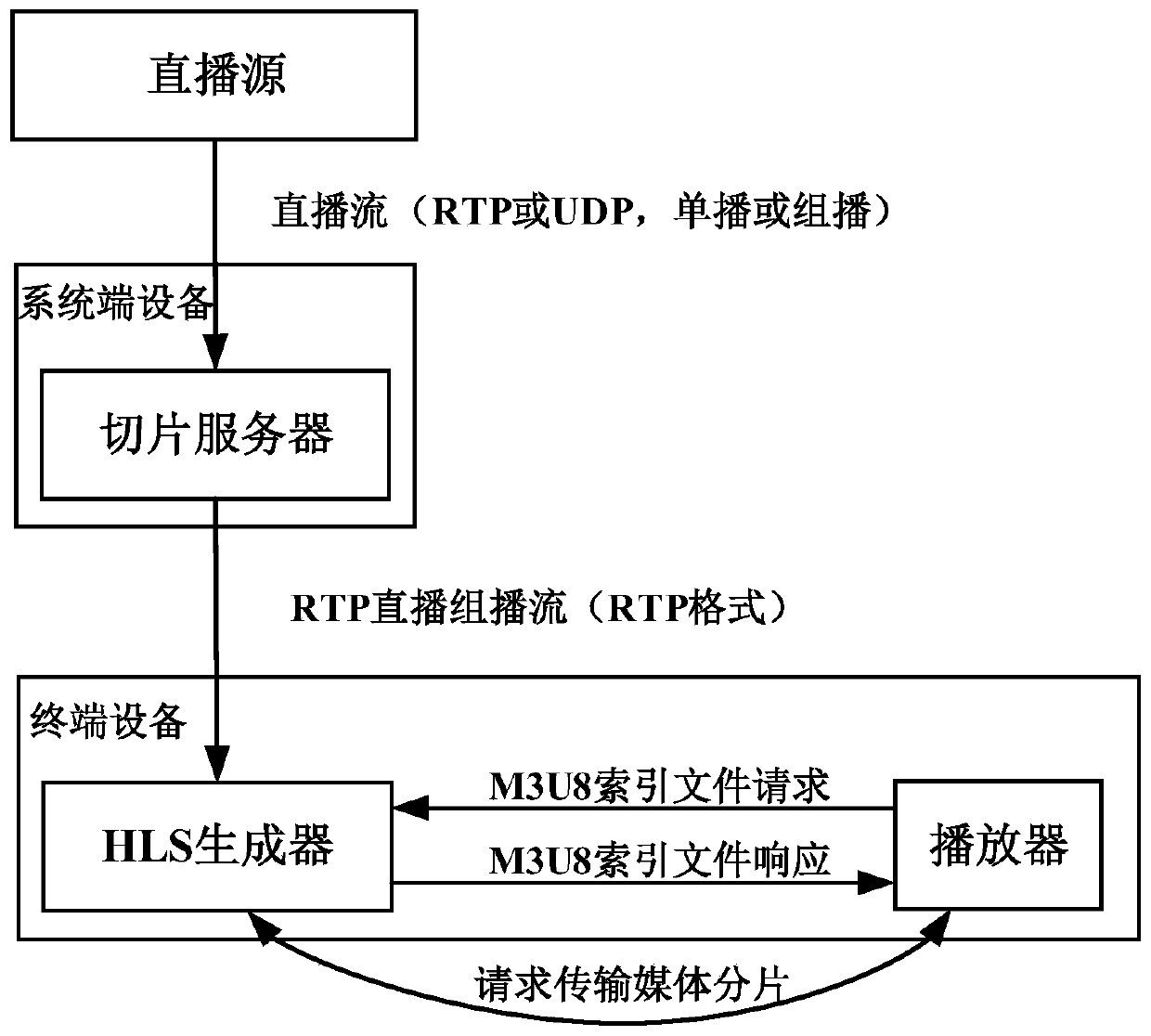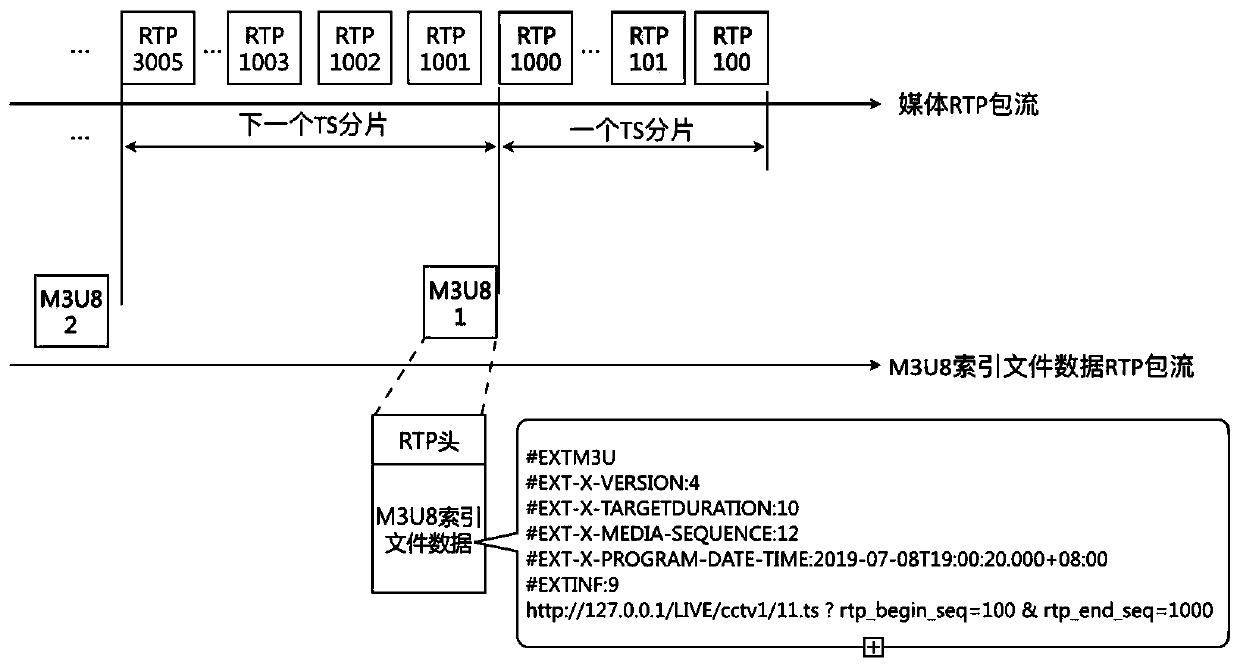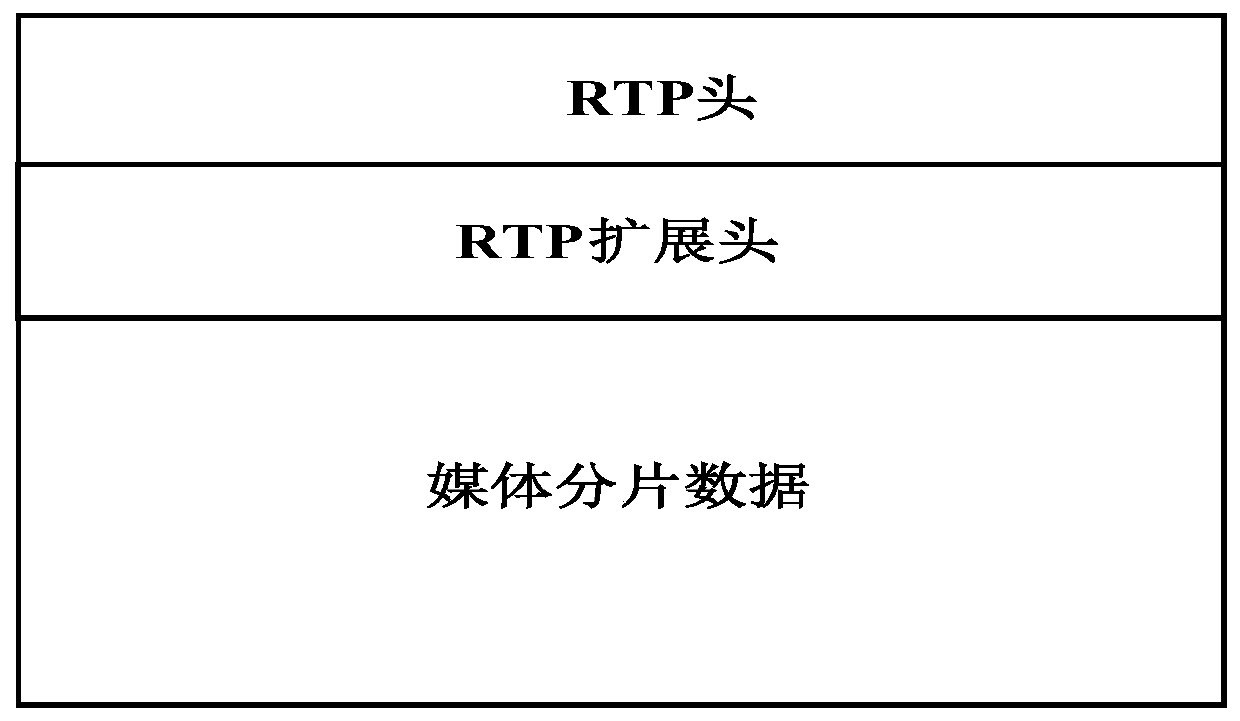HLS live broadcast system and method realized through multicast
A multicast and multicast streaming technology, applied in the field of Internet multimedia, can solve the problems of occupying huge network bandwidth resources, and achieve the effects of high slicing efficiency, reduced delay, and saved bandwidth
- Summary
- Abstract
- Description
- Claims
- Application Information
AI Technical Summary
Problems solved by technology
Method used
Image
Examples
Embodiment 1
[0054] see figure 1 As shown, this embodiment provides an HLS live broadcast system implemented through multicast, including a live broadcast source, system end devices and terminal devices. Among them, the system-side device is provided with a slice server; the terminal device is provided with an HLS generator and a player.
[0055] The slicing server is used to: receive the live streams of one or more live channels from the live source, respectively perform: virtual HLS slicing, encapsulate the generated media slices and M3U8 index file data information in RTP packets, and send them in multicast mode go out. It can be understood that performing virtual HLS slicing means that when performing HLS slicing, the actual media fragments are not generated and cached in the memory or disk of the slicing server, but the media fragment indexes and meta information are encapsulated in RTP packets and presented as Multicast sending. This virtual HLS slicing method makes the slicing se...
Embodiment 2
[0061] The HLS live broadcast system implemented by multicast provided by this embodiment has the same basic structure as that of Embodiment 1, the difference is that, as a preferred embodiment, the slicing server performs virtual HLS slicing, divides the media into The data information of slices and M3U8 index files is encapsulated in RTP packets and sent out in multicast mode, which specifically includes the following operations:
[0062] The slicing server analyzes the received live stream, encapsulates each media segment in multiple RTP packets, and immediately sends the encapsulated RTP packets in multicast mode without delay, forming Media RTP packet flow;
[0063]Simultaneously, whenever the last part of the media content of a media fragment is contained in an RTP packet encapsulated by the slice server, the corresponding M3U8 index file data information is generated, which only contains the information of this media fragment (in order to increase processing Efficiency...
Embodiment 3
[0068] A kind of HLS live broadcast system realized by multicast provided by this embodiment, its basic structure is the same as Embodiment 2, the difference is that, as a preferred implementation mode, the format of the media RTP package encapsulated by the slice server is as follows: image 3 As shown, it includes RTP header, RTP extension header and media segment data (TS data). Among them, the RTP extension header format is as follows Figure 4 shown, including:
[0069] V: 2 bits, which is the version number of the extended header, and the specific value will be determined during implementation.
[0070] FT: 2 bits, which is the frame type, indicating whether the video data in the current RTP packet belongs to I frame, P frame or B frame; for example, 1 means I frame, 2 means P frame, and 3 means B frame.
[0071] FP: 2 bits, indicating the frame position, indicating that the video data in the current RTP packet is at the position of the current frame, whether it is the...
PUM
 Login to View More
Login to View More Abstract
Description
Claims
Application Information
 Login to View More
Login to View More - R&D
- Intellectual Property
- Life Sciences
- Materials
- Tech Scout
- Unparalleled Data Quality
- Higher Quality Content
- 60% Fewer Hallucinations
Browse by: Latest US Patents, China's latest patents, Technical Efficacy Thesaurus, Application Domain, Technology Topic, Popular Technical Reports.
© 2025 PatSnap. All rights reserved.Legal|Privacy policy|Modern Slavery Act Transparency Statement|Sitemap|About US| Contact US: help@patsnap.com



